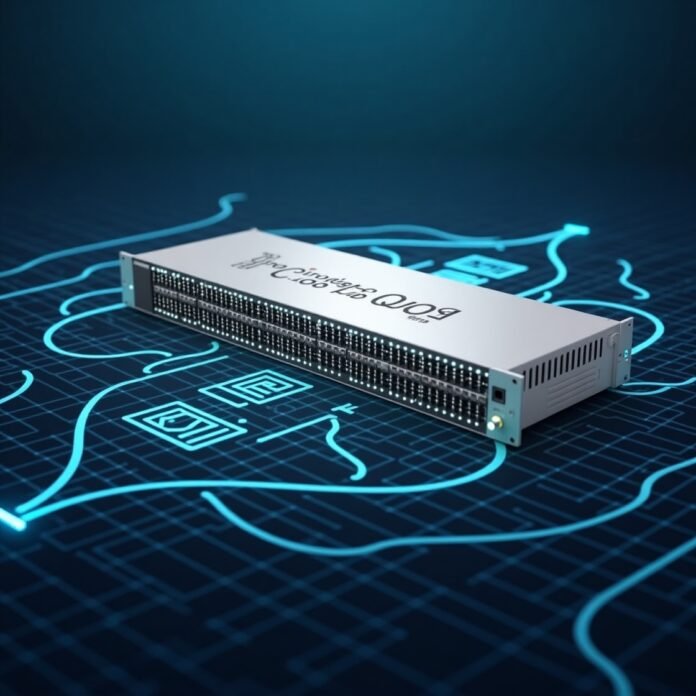Why VLANs Are Essential for Modern Network Switches
In today’s connected world, network switches with VLAN capability are crucial for:
✅ Enhanced network security through traffic isolation
✅ Improved performance by reducing broadcast domains
✅ Simplified network management with logical segmentation
Key Benefits of Using VLANs on Network Switches
- Security Segmentation
- Isolate sensitive devices (servers, IP cameras) from general traffic
- Prevent lateral movement in case of breaches
- Traffic Optimization
- Reduce congestion in busy networks
- Prioritize critical applications (VoIP, video conferencing)
- Flexible Network Design
- Group devices logically regardless of physical location
- Easily adapt to changing business needs
Choosing the Best Network Switch for VLANs
When selecting network switches for VLAN implementation, consider:
Top Managed Network Switches for VLANs (2025)
| Switch Model | Ports | Key Features | Best For |
|---|---|---|---|
| Cisco Catalyst 1000 | 8-48 | Enterprise-grade security | Large businesses |
| TP-Link Omada SG2428 | 24 | Affordable cloud management | Small offices |
| Ubiquiti UniFi USW | 8-48 | Intuitive interface | Prosumers |
| Netgear GS728TP | 24 | PoE+ support | Surveillance systems |
Step-by-Step VLAN Configuration on Network Switches
1. Accessing Your Network Switch
- Connect via Ethernet to your managed network switch
- Open a web browser and enter the switch’s IP address
- Log in using admin credentials
Pro Tip: Always change default passwords for security
2. Creating VLANs
- Navigate to VLAN Settings
- Click “Add VLAN”
- Configure:
- VLAN ID (e.g., 10 for Office)
- VLAN Name (descriptive label)
3. Assigning Ports to VLANs
- Go to Port Configuration
- Select ports for each VLAN
- Set correct PVID (Port VLAN ID)
4. Configuring Trunk Ports
- Enable 802.1Q tagging for inter-switch connections
- Specify allowed VLANs on trunk ports
5. Testing Your VLAN Setup
- Connect test devices
- Verify:
- Intra-VLAN communication
- Inter-VLAN isolation
- Use
pingandtraceroutefor testing
Common VLAN Configuration Mistakes to Avoid
❌ Incorrect PVID assignments causing misrouted traffic
❌ Missing trunk port configuration leading to VLAN leaks
❌ Forgetting to save configurations after changes
Advanced VLAN Best Practices for Network Switches
- Implement VLAN ACLs for enhanced security
- Use Private VLANs for additional isolation
- Configure VLAN routing for inter-VLAN communication
- Monitor VLAN traffic for optimization
Troubleshooting VLAN Issues on Network Switches
If experiencing problems:
- Verify port assignments
- Check trunk configurations
- Test with known-working cables
- Review switch logs for errors
Future-Proofing Your VLAN Setup
As networks evolve:
- Consider SDN-compatible network switches
- Plan for multi-gigabit VLAN trunks
- Implement automated VLAN provisioning
Conclusion: Optimizing Your Network with VLANs
Properly configured VLANs on network switches provide:
🔹 Better security through segmentation
🔹 Improved performance via traffic control
🔹 Simplified management of complex networks
For optimal results:
- Choose quality managed network switches
- Follow best practice configurations
- Regularly review and update your setup
Need help selecting network switches? Check our 2025 Switch Buying Guide for expert recommendations!




Great breakdown of how VLANs enhance both security and network performanceVLAN Blog Comment Creation. One thing I’ve found helpful is using VLANs to isolate IoT devices, especially in environments with a mix of trusted and less-trusted hardware—it really tightens up control. Curious if you plan to dive deeper into VLAN trunking or inter-VLAN routing in a future post?